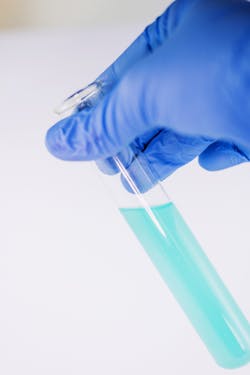Saliva test may work as first coronavirus test
A global research meeting wrapped up to set priorities to answer key questions about COVID-19 and tackle the outbreak, with a simpler diagnostic test and treatment protocols at the top of the list. While disease activity in China continued its steady growth – with reported cases now over 60,300 and deaths at 1,370 in mainland China – a large spike in both.
Research teams published new early findings, including that the virus is easily detected in saliva and that pregnant women in their third trimesters don't seem to pass the virus to their babies. In research developments, investigators from Hong Kong writing in Clinical Infectious Diseases said they detected the COVID-19 virus in saliva samples from 11 of 12 people they sampled. On serial sampling, they saw a declining trend, and they concluded that the findings are useful, because saliva samples could be a noninvasive specimen for testing. They also noted the saliva findings have implications for infection control.
A research team from China in a case series of nine pregnant women hospitalized in Wuhan with lab-confirmed COVID-19 found that of samples collected from six, all were negative for the virus. The researchers published their report today in The Lancet. The nine babies were delivered via caesarean section. The samples that tested negative included amniotic fluid, cord blood, neonatal throat swab, and breastmilk samples. The authors concluded that the findings from the small group suggest no evidence of vertical transmission in women who have COVID-19 pneumonia late in their pregnancies.
Soumya Swaminathan, MD, the World Health Organization’s (WHO's) chief scientist, said the top priority was a simpler diagnostic test, which will also be useful for lower-income countries that don't have complex lab facilities. She said another very high priority is information on optimal treatment and the best treatment protocols, which need studies based on standard data collection. She said more research on transmission and epidemiology is also crucial. "We really need to understand this virus—its transmission, age-groups, underlying conditions, what makes it more severe, impacts of interventions," she said. "We have a lot to learn from studying all of these."
WHO officials said there are four vaccines in development, with one or two of them poised to enter human trials in 3 or 4 months, and, if successful, a vaccine might be available for wider use in 12 to 18 months. They said researchers are still working on a master protocol to study existing therapies, used singly or in combination.
Sylvie Briand, MD, PhD, the WHO's director of epidemic and pandemic diseases, said WHO officials have confirmed that China has adapted its case definition to include asymptomatic and mild cases that weren't included in the initial case definition. She said it's normal to adapt the case definition as outbreaks unfold, and Chinese health officials are now able to test contacts and look for transmission chains.
Mike Ryan, MD, who directs the WHO's health emergencies program, said the shift is likely to generate even more confirmed cases, likening the case definition change to throwing a wider net with a finer mesh. "This is what we want to see in the containment phase." At the media briefing, Ryan said deaths are on the rise, because there's a lag time between the time when cases surge, such as they did in the past two weeks, and when people with serious disease succumb from the disease.
